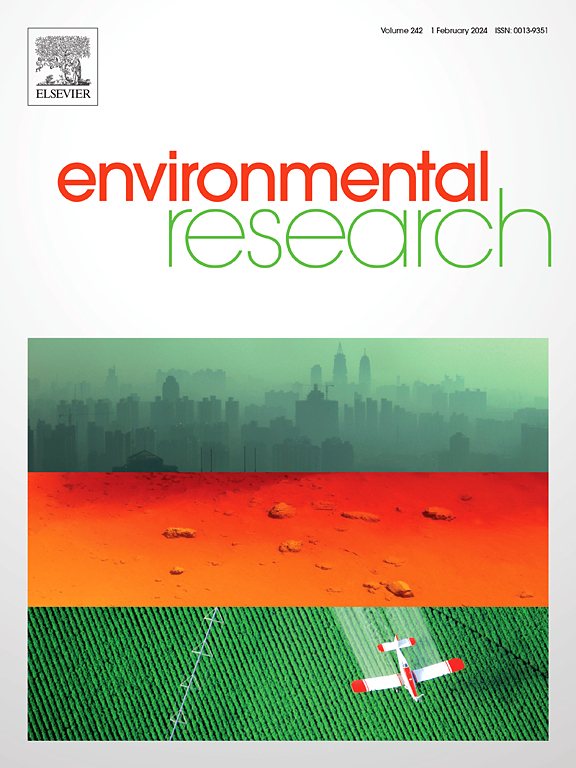Innovative microalgae technologies for mariculture wastewater treatment: Single and combined microalgae treatment mechanisms, challenges and future prospects
IF 7.7
2区 环境科学与生态学
Q1 ENVIRONMENTAL SCIENCES
引用次数: 0
Abstract
The discharge of aquaculture wastewater, comprising nitrogen, phosphorus, heavy metals, and antibiotics from large-scale aquaculture, poses a significant threat to marine ecosystems and human health. Consequently, addressing the treatment of marine aquaculture wastewater is imperative. Conventional physicochemical treatment methods have various limitations, whereas microalgae-based biological treatment technologies have gained increasing attention in the field of water purification due to their ability to efficiently absorb organic matter from mariculture wastewater and convert CO₂ into biomass products. Microalgae offer potential for highly efficient and cost-effective mariculture wastewater treatment, with particularly noteworthy advancements in the application of combined microalgae technologies. This paper explores the research hotspots in this field through bibliometric analysis and systematically discusses the following aspects: (1) summarizing the current pollution status of mariculture wastewater, including the types and sources of pollutants in various forms of mariculture wastewater, treatment methods, and associated treatment efficiencies; (2) analyzing the factors contributing to the gradual replacement of single microalgae technology with combined microalgae technology, highlighting its synergistic effects, enhanced pollutant removal efficiencies, resource recovery potential, and alignment with sustainable development goals; (3) exploring the mechanisms of pollutant removal by combined microalgae technologies, focusing on their technical advantages in bacterial-algal coupling, immobilized microalgae systems, and microalgal biofilm technologies; (4) discussing the challenges faced by the three main categories of combined microalgae technologies and proposing future improvement strategies to further enhance their application effectiveness. In conclusion, this paper offers a detailed analysis of these emerging technologies, providing a forward-looking perspective on the future development of microalgae-based mariculture wastewater treatment solutions.

海水养殖废水处理的创新微藻技术:单一和组合微藻处理机制、挑战和未来展望。
大规模水产养殖排放的含氮、磷、重金属和抗生素的水产养殖废水对海洋生态系统和人类健康构成重大威胁。因此,解决海洋水产养殖废水的处理问题势在必行。传统的物化处理方法存在种种局限性,而基于微藻的生物处理技术由于能够有效地吸收海水养殖废水中的有机物,并将CO 2转化为生物质产品,在水净化领域受到越来越多的关注。微藻为高效、经济的海水养殖废水处理提供了潜力,特别是在联合微藻技术的应用方面取得了显著进展。本文通过文献计量学分析,探索了该领域的研究热点,系统论述了以下几个方面:(1)总结了海水养殖废水的污染现状,包括各种形式海水养殖废水中污染物的种类、来源、处理方法、处理效率等;(2)分析了微藻联合技术逐步取代单一微藻技术的影响因素,突出了其协同效应、污染物去除效率的提高、资源回收潜力的提升以及与可持续发展目标的契合;(3)探索联合微藻技术去除污染物的机理,重点研究其在菌藻耦合、固定化微藻系统、微藻生物膜技术等方面的技术优势;(4)讨论了三大类组合微藻技术面临的挑战,并提出了未来的改进策略,以进一步提高其应用效果。最后,本文对这些新兴技术进行了详细的分析,为基于微藻的海水养殖废水处理解决方案的未来发展提供了前瞻性的视角。
本文章由计算机程序翻译,如有差异,请以英文原文为准。
求助全文
约1分钟内获得全文
求助全文
来源期刊

Environmental Research
环境科学-公共卫生、环境卫生与职业卫生
CiteScore
12.60
自引率
8.40%
发文量
2480
审稿时长
4.7 months
期刊介绍:
The Environmental Research journal presents a broad range of interdisciplinary research, focused on addressing worldwide environmental concerns and featuring innovative findings. Our publication strives to explore relevant anthropogenic issues across various environmental sectors, showcasing practical applications in real-life settings.
 求助内容:
求助内容: 应助结果提醒方式:
应助结果提醒方式:


